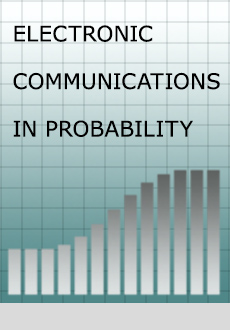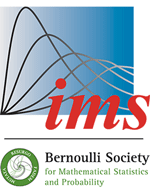Abstract
Let $C_n$ be the origin-containing cluster in subcritical percolation on the lattice $\frac{1}{n} \mathbb Z^d$, viewed as a random variable in the space $\Omega$ of compact, connected, origin-containing subsets of $\mathbb R^d$, endowed with the Hausdorff metric $\delta$. When $d \geq 2$, and $\Gamma$ is any open subset of $\Omega$, we prove that $$\lim_{n \rightarrow \infty}\frac{1}{n} \log P(C_n \in \Gamma) = -\inf_{S \in \Gamma} \lambda(S)$$ where $\lambda(S)$ is the one-dimensional Hausdorff measure of $S$ defined using the correlation norm: $$||u|| := \lim_{n \rightarrow \infty} - \frac{1}{n} \log P (u_n \in C_n )$$ where $u_n$ is $u$ rounded to the nearest element of $\frac{1}{n}\mathbb Z^d$. Given points $a^1, \ldots, a^k \in \mathbb R^d$, there are finitely many correlation-norm Steiner trees spanning these points and the origin. We show that if the $C_n$ are each conditioned to contain the points $a^1_n, \ldots, a^k_n$, then the probability that $C_n$ fails to approximate one of these trees tends to zero exponentially in $n$.
Citation
Yevgeniy Kovchegov. Scott Sheffield. "Linear Speed Large Deviations for Percolation Clusters." Electron. Commun. Probab. 8 179 - 183, 2003. https://doi.org/10.1214/ECP.v8-1098
Information





